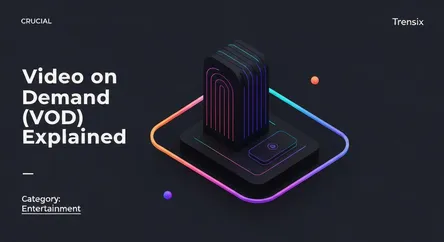Entertainment
Video on Demand (VOD) Explained

Explore Video on Demand (VOD), the system that lets you watch TV and movies anytime. Learn why streaming services have replaced traditional TV for many.
What is it?
Video on Demand (VOD) is a media distribution system that allows users to select and watch video content whenever they choose, rather than being tied to a specific broadcast schedule. Unlike traditional television, VOD services like Netflix, Disney+, and Amazon Prime Video host vast libraries of movies and TV shows accessible instantly over the internet. These platforms operate on various models, including subscription-based (SVOD), transactional (TVOD) where users rent or buy content, and ad-supported (AVOD).
Why is it trending?
The primary driver for VOD's popularity is unparalleled convenience and control. Viewers can pause, rewind, and watch entire seasons at their own pace, popularizing the concept of "binge-watching." The accessibility across multiple devices—from smart TVs to smartphones—means entertainment is always available. Furthermore, sophisticated algorithms provide personalized recommendations, keeping users engaged with a continuous stream of content tailored to their tastes.
How does it affect people?
VOD has fundamentally reshaped media consumption habits, leading to a massive cultural shift away from linear television, a trend known as "cord-cutting." It has empowered viewers with choice but also contributes to market fragmentation, with countless services competing for attention. This has ushered in an era of high-budget original programming but can also create subscription fatigue and challenges for content discovery in an overwhelmingly crowded landscape.